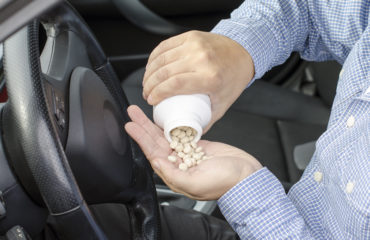May 14th, 1988 is a day that will long be remembered by many. On that day, the deadliest impaired driving crash in U.S. history occurred on Interstate 71 in Carrollton, Kentucky. An impaired driver in a pickup truck going the wrong way on the interstate hit a church activity bus with 67 passengers. There were 27 fatalities, 24 of them children and young adults ranging in age from 10 to 19, and 34 serious injuries. The driver in the pickup had a .24 BAC. He was found guilt of 27 counts of manslaughter in the second degree and sentenced to 16 years in prison. But no amount of jail time, no amount of fines paid, will bring back the dead or completely heal the injured.
Since that time, over 300,000 more people have been killed and millions more injured because of impaired drivers. However, also since that time, society has declared something needs to change. It has been a slow process, but over the years we have borne witness to the implementation of prevention efforts within the criminal justice system, including the strengthening of impaired driving laws, stepped-up law enforcement enforcement efforts, and the development of Traffic Safety Resource Prosecutors and other specialized criminal justice experts; ultimately strengthening the arrest, prosecution, and adjudication of DWIs, and saving thousands of lives. But we are not done. Almost 10,000 people died in 2011 due to impaired driving. Clearly, more has to happen.
NTSBs Recommendations to End Impaired Driving
25 years later to the day, the National Transportation Safety Board (NTSB) made recommendations that challenge us to no longer be complacent about the achievements made during the past quarter of a century. Whether we agree or not, NTSB’s recommendations challenge us to be bold in our thinking and in our actions. Noting there is “no simple, single solution to reaching zero traffic deaths from alcohol-involved crashes,”[1] the National Transportation Safety Board issued new findings and recommendations calling for a comprehensive approach to end impaired driving.
Specifically, the NTSB report “makes recommendations to the states in the following safety issue areas:
- Reducing the per se blood alcohol concentration (BAC) limit for all drivers,
- Conducting high-visibility enforcement of impaired driving laws and incorporating passive alcohol sensing technology into enforcement efforts,
- Expanding the use of in-vehicle devices to prevent operation by an impaired driver,
- Using driving while intoxicated (DWI) courts and other programs to reduce recidivism by repeat DWI offenders, and
- Establishing measurable goals for reducing impaired driving and tracking progress toward those goals.” [2]
Not surprisingly, the one recommendation that has created a furor is reducing the BAC limit for drivers from .08 to .05. While there is some support, a number of traffic safety organizations and others have either remained silent on this particular recommendation, or come out in opposition.
It Takes Time and Continuous Effort
For years, state after state has tried to implement a quick and easy solution to ending impaired driving, such as increasing the fines and amount of incarceration. However, after 25 years of effort, and even significant improvement, DWI is still one of the most committed crimes in the country, with 1.4 million people arrested, and 10,000 people killed every year. Overall, our society has changed. It is no longer acceptable to “have one more for the road,” and the “designated driver” is a well-accepted role. But the problem of impaired driving and the unacceptable number of alcohol-related fatalities continues. There is no quick and simple solution. The reasons why a person drives impaired are vast: from a social evening out with friends, to an addicted person that is unable to control his use of alcohol. With so many varied causes, any effective effort to end impaired driving must be comprehensive. NTSB is now challenging us to take up the call and look at all aspects of impaired driving.
Additional Recommendations for Action
Are these recommendations enough? No. More can be done, including:
- Increased server training through such programs as Techniques of Alcohol Management (TAM) and Training for Intervention ProcedureS (TIPS)
- Better screening and medical interventions
- Increased screening and assessment of all DWI offenders in the courts, and
- Even greater public education and prevention efforts.
Dr. Rosekind, NTSB Board member, once noted: “Complacency is too common, and we have to make it unacceptable. Unacceptable that any life is lost in a crash due to an impaired driver.” [3] Whether or not we agree with all of them, these recommendations take up that challenge—to make it unacceptable that anyone dies in a crash from an impaired driver. The recommendations encourage us to once again look at what will make a difference and start a new discussion that will reinvigorate us. The recommendations remind us to examine what more can we do to save more lives on our highways.
May 24, 2013
[1] Safety Report — Reaching Zero: Actions to Eliminate Alcohol-Impaired Driving, NTSB/SR-13/01
[2] Safety Report — Reaching Zero: Actions to Eliminate Alcohol-Impaired Driving, NTSB/SR-13/01, p. vii
[3] Dr. Mark Rosekind, remarks to National Association of Drug Court Professionals (NADCP) at Closing Session on June 2, 2012, Nashville, Tennessee









“Noting there is “no simple, single solution to reaching zero traffic deaths from alcohol-involved crashes,”[1] the National Transportation Safety Board issued new findings and recommendations calling for a comprehensive approach to end impaired driving.”
But what if there soon will be a single solution that would virtually eliminate driver impaired collisions? Wouldn’t that be worth advocating, lobbying for and promoting endlessly?
From my research on autonomous (self-driving, automated, driverless) vehicles I am confident that we will soon have the necessary tool to have a significant impact in this area as soon as the technology is deployed. That might be as soon as 2017-2018 if Google are to be believed. Even the automakers are indicating that we will have fully autonomous vehicles by 2025 at the latest.
I write more on my blog about this technology and the potential impacts, which could do so much more than reduce all collisions by as much as 95% by removing driver error, but could also transform society:
http://autonomous-vehicle-impacts.blogspot.ca/
I agree that it is possible in time the issue of impaired driving could be stopped. There is also DADSS (Driver Alcohol Detection System for Safety – http://www.dadss.org) which is supported by the some of the Auto industry, MADD, and Congress. Once it is developed and implemented, it will not allow an intoxicated person to drive any car as all cars will have it. And DADSS is expected to be developed before the 2017 time frame mentioned on the automated car. However, both technologies will take decades before they are fully implemented. During that time, thousands and thousands of lives will be ended because of the impaired driver. We must take action now and not wait until every car is impaired-driver-proof.
[…] Combating DWI – Have We Done Enough? (trafficsafetyguy.com) […]